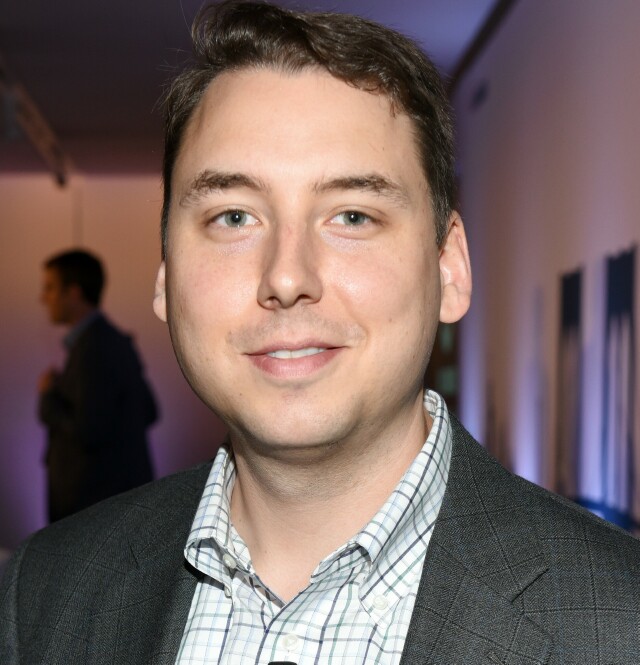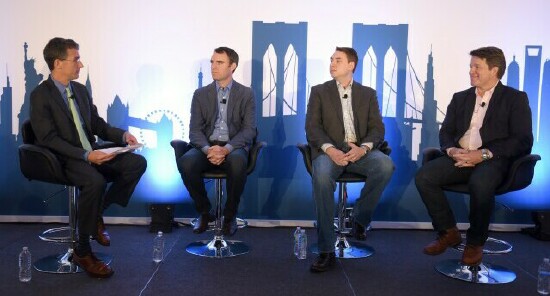Q&A: Lonely Planet on Using Automation to Capture Ad Spend

In the second installment of a three-part series, Jay Sears, Senior Vice President Marketplace Development of Rubicon Project discusses how to use automation to capture advertising spend from small and medium-sized businesses with Tim Daugherty of Lonely Planet. The two executives appeared at a program titled “$50B Left Behind: Capturing SMB Spend” during Advertising Week New York in September 2015.

During Advertising Week in New York, Jay Sears (left) of Rubicon Project; Ryan Davis of The Weather Company; Tim Daugherty of Lonely Planet and Al Maitland (right) of Kijiji appeared at a program titled $50B Left Behind: Capturing SMB Spend.
Be sure to read Part One of this series; Jay's interview with Ryan Davis of The Weather Company.
Your Name:Tim Daugherty
Your Company:Lonely Planet
Your Title:Director of Ad Operations and Programmatic Revenue
JAY SEARS: What do you read to keep up with politics, art and culture?
TIM DAUGHERTY: PBS, NPR, Vice. Any content producer that approaches information objectively, holistically and with patience.
SEARS: What do you read to keep up with friends?
DAUGHERTY: Facebook
SEARS: What do you read to keep up with our industry?
DAUGHERTY: AdExchanger, Ad Age, Adweek, company press releases. However, I find the best industry source is connecting with colleagues in the industry. That’s how you find out what is real vs. what is smoke and mirrors.
SEARS: What’s your favorite commercial of all time?
DAUGHERTY: Apple 1984. I’ve always appreciated Apple’s unique and meticulous marketing approach.
SEARS: With regards to self-service advertising automation, what are Lonely Planet’s three biggest company-wide initiatives for the remainder of 2015 and into 2016?
DAUGHERTY:
- Outreach: Rather than an “auto-pilot” self-serve offering, we plan to leverage marketing efforts to proactively inform and incentivize small businesses to use this platform;
- Product Optimization: As we evolve our product offering in the areas of mobile and native we will add these to the mix as well;
- Geographical Diversity: Given our global audience, we want to ensure buyers can purchase media in their local currency. This may involve us managing several instances of self-serve, but in the end it should help with adoption and comfortability with the platform.
SEARS: Self-service advertising is used in a variety of customer use cases. Which of the following use cases apply to your current business?
- Walk-up business from small and medium size businesses
- Small and mid-size agencies
- Specialized markets (such as bed and breakfasts for a travel publisher or home appraisal services for a real estate publisher)
- Vendor or co-op advertising
- International markets
DAUGHERTY: A, C and E are most relevant to our current business. Having an option for small, independent businesses to purchase advertising without allocating large amounts of human capital is key to maximizing ROI. This is particularly true for international clients that reach out to us looking for ways to connect to our audience.
SEARS: Do you anticipate other future use cases?
DAUGHERTY: I imagine there will be a time when there is more adoption and optionality for non-standard digital products, such as print or business development type products. Also, building and maintaining custom purchase portals for agencies with negotiated rates and terms feels like a natural evolution to the technology.
SEARS: What are some of Lonely Planet’s unique assets and /or advertiser value propositions you are able to leverage using a self-service system?
- 1st party data
- Hyperlocal targeting
- Mobile ad opportunities
- Video ad opportunities
- Native ad opportunities
- Email opportunities
- Ad creation (via self-service)
- 3rd party ad tags (via self-service for approved buyers)
- Selling in local currencies around the world
- Accepting credit card payment
DAUGHERTY: B, C, E, G, I, J The big exploration for us at the moment is Native as a product(s). From there, we’ll figure out how and if that suite of products can translate into a meaningful self-serve opportunity. Our unique asset will continue to be our content and brand, which has built a passionate and loyal audience. It is our aim to build advertising products that are scalable and meaningful to our audience.
SEARS: Do you foresee using self-serve in areas such as print, radio, out-of-home and television in the future?
DAUGHERTY: Yes, I do for all marketing mediums. However, it will take some time and further advancement of the tools and industry mindset. The trick is finding the right balance of technology and support. No matter how advanced a technology platform becomes, there will always be a human element in marketing deals.
SEARS: When did you first add a self-service component to your sales efforts?
DAUGHERTY: Self-serve and programmatic was implemented for the Lonely Planet brand in Q1 2015. Self-serve provides Lonely Planet an opportunity to serve hyper-local and specialized clients without expending a lot of human capital. Prior to self-serve, we would have to turn away smaller clients because managing the account was cost prohibitive.
SEARS: How many people internally are involved in the management of the self-service offering?
DAUGHERTY: Between our sales and operations teams, we have around 10 people that are involved with some component of self-serve.
SEARS: What is the percentage increase, self-serve sales 2014 vs. expected 2015?
DAUGHERTY: Given that we started in 2015, revenue this year is considered incremental versus 2014. We do expect significant revenue growth for this platform from now until the end of the year.
SEARS: If you could go to the airport right now with friends or family and fly anywhere in the world for vacation, who would you take and where would you go?
DAUGHERTY: I would take my wife and son to Hawaii for as long we could stay.
SEARS: If you could create an endowment to fund any existing non-profit you designated, what lucky non-profit organization would that be?
DAUGHERTY: The Carter Center. It has such wonderful human rights and health initiatives all over the world. Jimmy Carter recently gave a TED talk about one of the major issues the foundation is combating, the mistreatment of women around the world. I found the conversation particularly impactful.
SEARS: What is your favorite restaurant in the world?
DAUGHERTY: 10th and Willow in Hoboken, NJ. My wife and I have been going there for years. Wonderful place with the best wings and martinis!
SEARS: Thanks, Tim!
The opinions and points of view expressed in this commentary are exclusively the views of the author and do not necessarily represent the views of MediaVillage/MyersBizNet management or associated bloggers.


